Semester7
Notes of courses done/attended in semester 7 in college
Lecture 8
Video
link
Slides
link1
link2
Summary
- How can my web-server handle increasing load/number of users
- Horizontal and Vertical scaling
- vertical = increasing capacity of system
- fault tolerance nahi
- horizontal = # of servers increased
- need load balancers then
- improving response time
- network latency
- users might be far away
- CDNs
- generally static content duplication
- Disk latency
- content stored in disk and has to be read
- cache is a solution
- mem cache is used for it
- Making wev tier stateless
- if state hua, user session is bound to physical server and to move it across is difficult, all requests coming from user, only 1 webserver can beu sed
- so decouple it and load session in the dtaabase
- and now load balancer can accordingly balance the requests
- Cluster
- horizontal scaling
- number of servers badha and get more # of users
- scaling should be in terms of the servers
Further Scaling of Web Tier
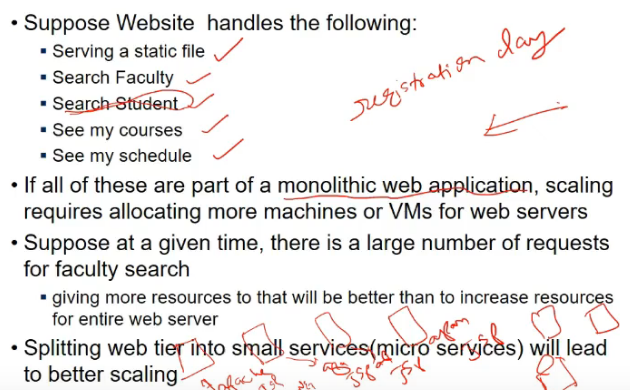
- serving static file
- website is composed of these different pages
- when it is registration day
- search faculty
- search student will have more requests coming in(this is only for one day)
- say I have 4 servers ,each have its own apache, JSP or .NET maybe db is shared
- If I increase another webserver, I will have to replicate everyth in it also, if it is monolithic webserver
- say, jo server I am adding I only add them for search faculty facility, I cannot do.. this is problem of scalibility. I have to do for entire stack
- this is where microservices come in
- divide web tier into small services(microserivces) and it leads to btr scaling
Microservices - Intro
- initially every request was coming to port 80 ,it was viewed as single application
- again, it will come to a kind of gateway, and there will be some small small services running on webserver, entire set of services might not be running on all servers
- gateway decides where to forward request
- a microservice might need other microservices and send reply back
- now we can scale in terms of services instead of servers
- Service composition
API vs Message Queues
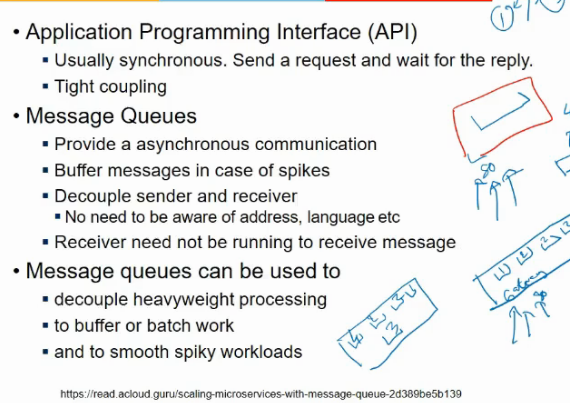
- say service 1 and 3 are reqd for completing service 4 request
- now 4 has 2 means of accessing these services
- API
- wait for request to complete and then only call another fn/API
- this is tight coupling
- MSG queues
- 4 puts a msg req in msg q, 1 and 3 checks agar uske lie req ayi hai
- so asynch hai yeh
- also, it acts as a buffer
- agar traffic ekdm se aaya, store requests here
- it decouples sender and rcvrs
- rcvr need not be awake when sender sends msg
- also language prob nahi
- API me language matters
- Remote Method Invocation = can be done only if java version matches
Messgae Queues and microservices
- mqs help in decoupling services
- one service down => entire system down in monolithic arch
- here no
- also, scaling on based of serices
Scaling Database Tier

- Sharding
- splitting records on multiple independent servers
- records are disjoint
- hash function used by load balancer to find ki kis server me hoga record
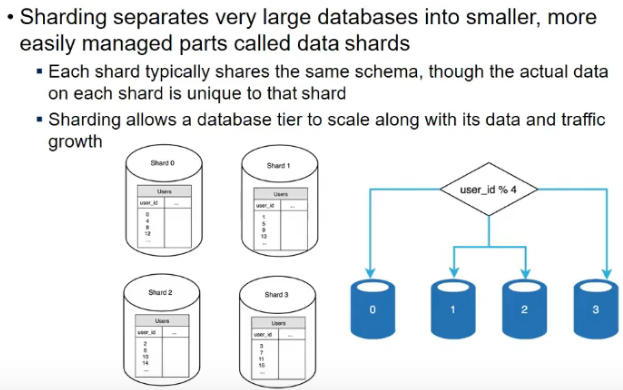
- Advantage
- easy to scale up
- to get more perf, add more shards
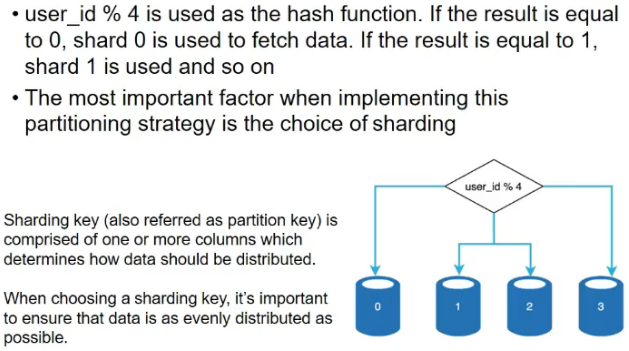
Complexities Introduced by Sharding
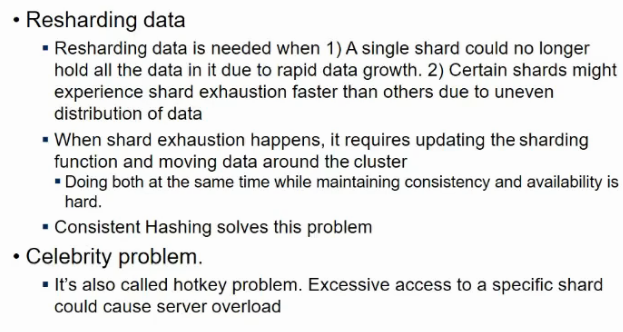
- some key, values might be very popular so ek particular shard pe bahut load
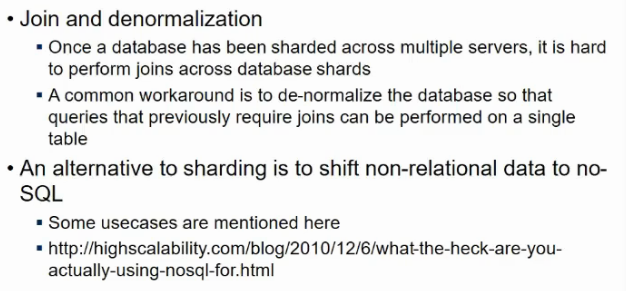
- denormalize
- duplicate data to get efficiency(not storage eff)
Microservices
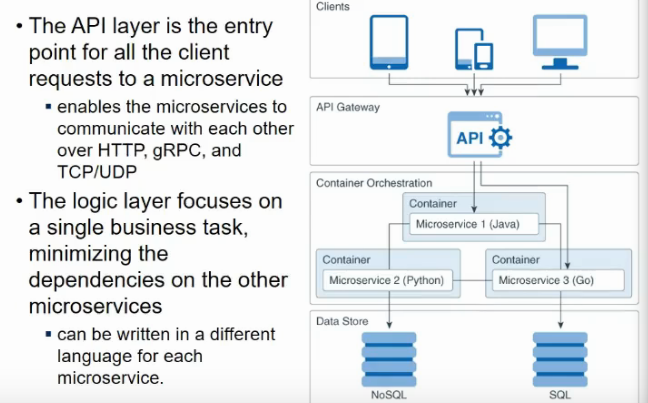
- monolithic
- writing a single appln and hosting it
- why can’t we divide into services and run each separately
- one microservice runs in a container
- container is like an abstraction of an OS within which microservice will run
- so we can run diff microservice in one system, each runnign in one container
- and anyone can be using any language
- microservice is loosely coupled
- no coupling
- each service depends upon some resp from other service, not more than that
- shared nothing model
- have nothing shared in between
- database they might share
- but in gen, each have its own db view
- one responsibility with one microservice
- some microservice might be composed of multiple microservices
- communication can be done via REST API, gRPC, TCP/UDP
- microservice is generally stateless
- sees each req as new
- stores state inside db, so that state is consistent

Differences between microservices and monolithic architectures
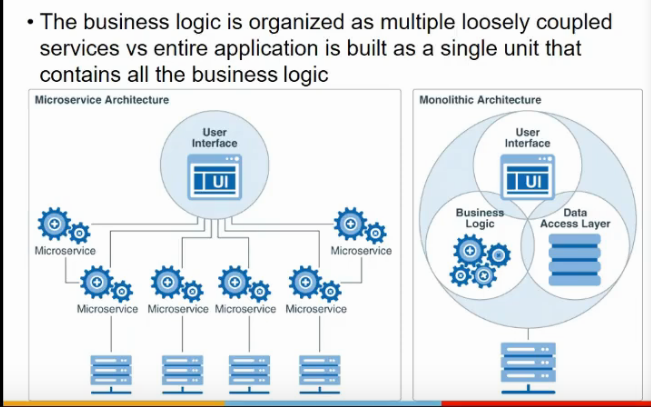
- in monolithic
- all things are part of a single appln
- tho there can be layered
- that is we can change one without affecting other
- but scaling limitations, and one fails => whole service fails
- in microservice
- each ms dealing with buisness logic
- each has its own data access layer
- data processed and send resp and UI renders it
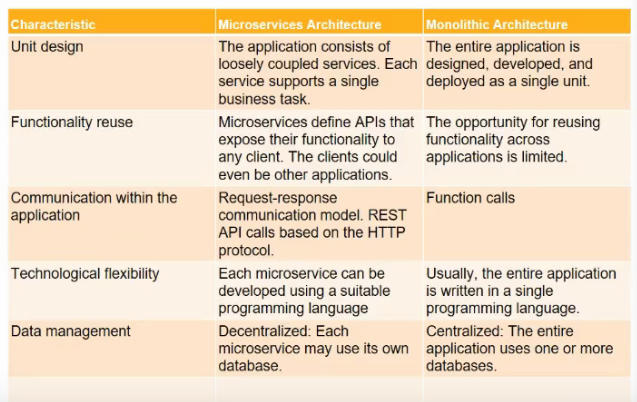
Communication mechanism
- REST API
- is like HTTP request
- URLS act as object identifier
- it follows same semantics as HTTP
- a HTTP req is treated as a txn
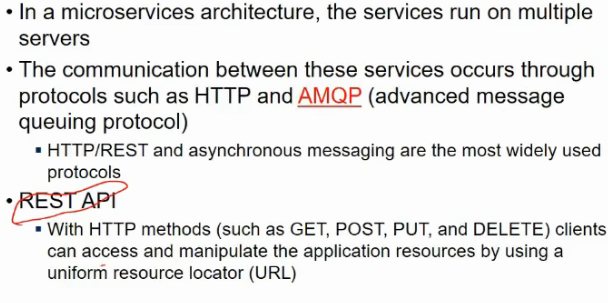
- AMQP
- advance dmsg queuing protocol
- when commu is using msg queues
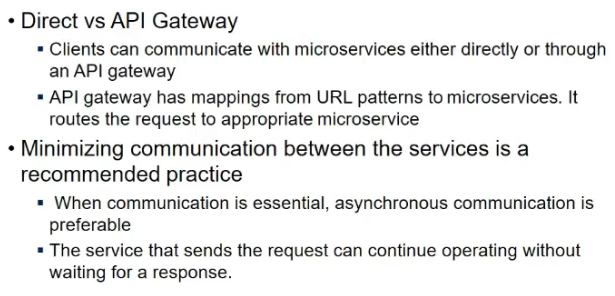
- client directly communicate with ms
- then every ms access have to be known
- API gateway
- mapping using url patterns to ms
- url pattern maps to a ms
- minimize communication b/w services
Limitations
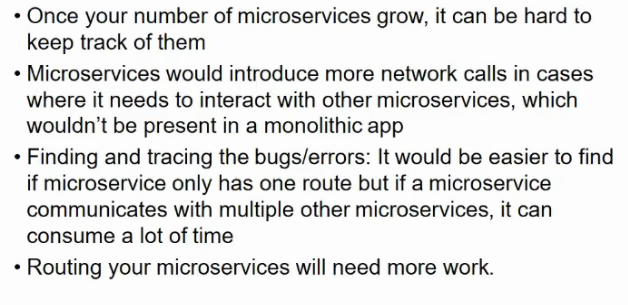
- if bahut jyada
- n/w overhead
- debugging mushkil
- kaha prob aayi, itna dher saara toh hai
Deployment
- kubernetes help to deploy containers and each container can contain a ms
Web Services
- diff services runnning on diff systems and they want to communicate
- data format should be standardized
- we have in-memory representation of int, float, ptrs
- when it is written on the n/w
- int is not a single byte, it is 4 bytes
- how these 4 bytes will be sent should be standardized
- like MSB first etc
- order pata hoga tabhi to decode kar payunga na bhai
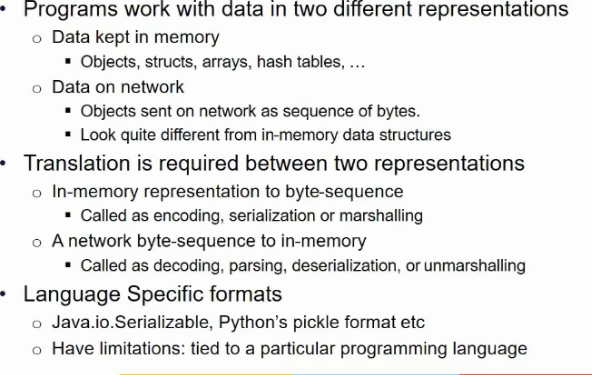
- python me pickle
- java me serializable interface, etc
- these are lang dependent formats
- lang independent formats = csv, xml, json
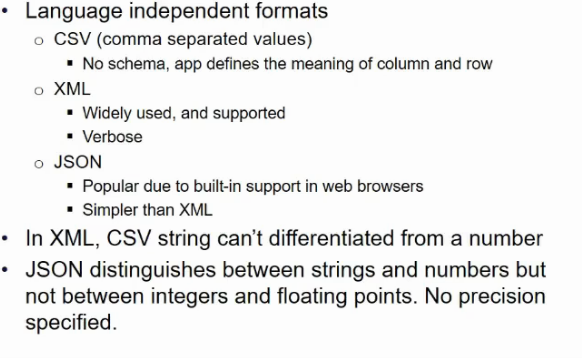
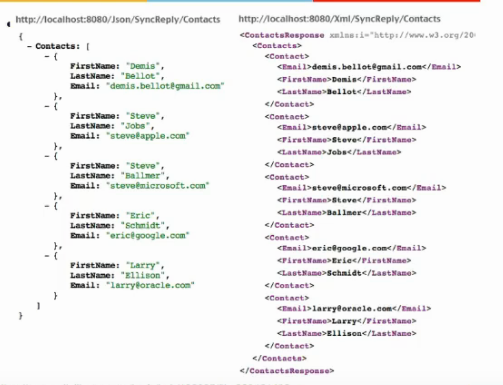
JSON Syntax
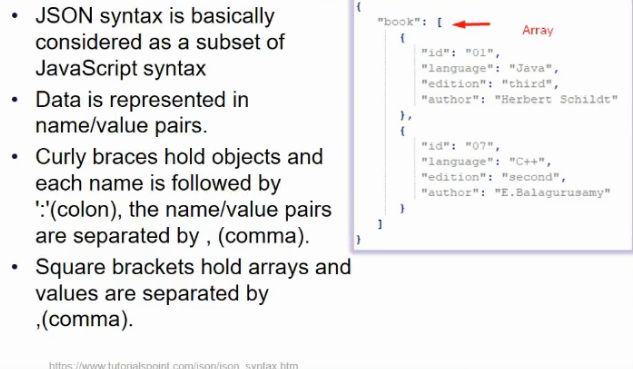
Text and binary
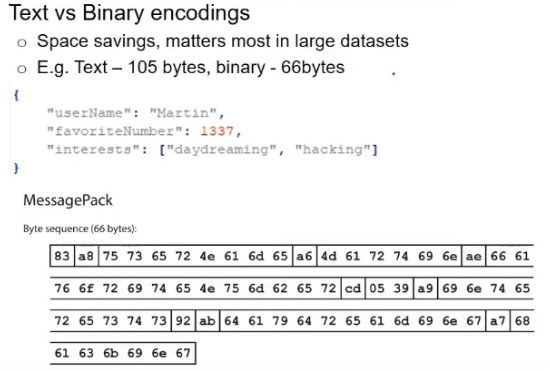
Data Flow between processes

Data Flow through services

REST
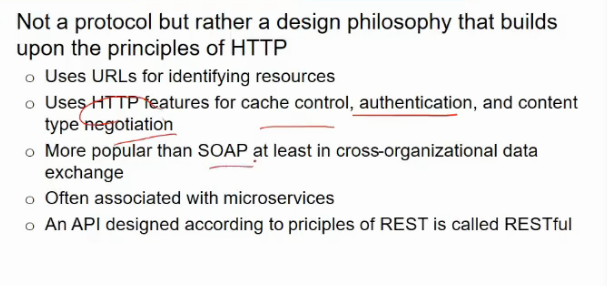
- SOAP has its own msgs formats that has to be put in HTTP body
- REST doesn’t has that
- HTTP verbs act as semantic actions
- and body as data
SOAP
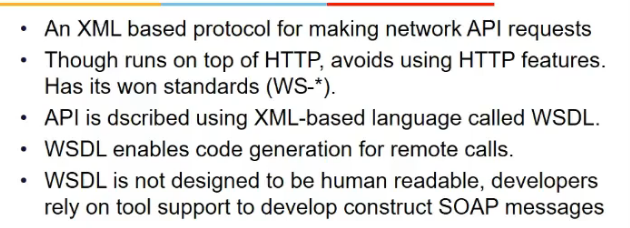
- WSDL is machine readable
- web service description language
- any web service can be described and kkept in registry
- any prog which want to use this webserv, read from registry and see how to call it etc
REST - Representational State Transfer
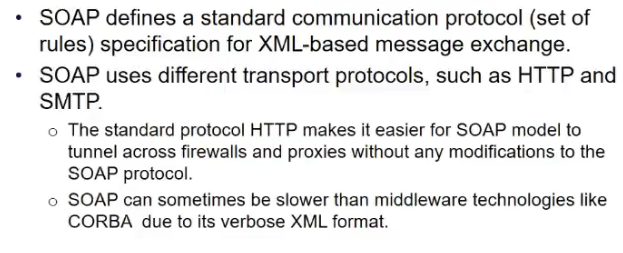


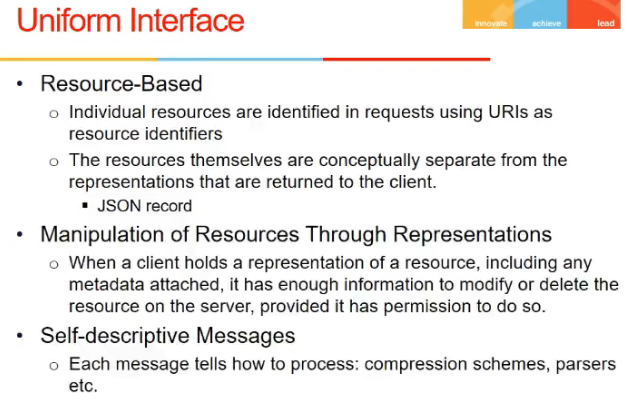
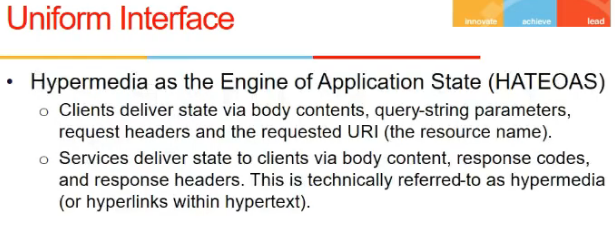
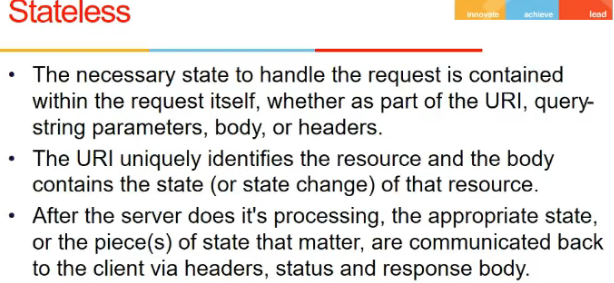

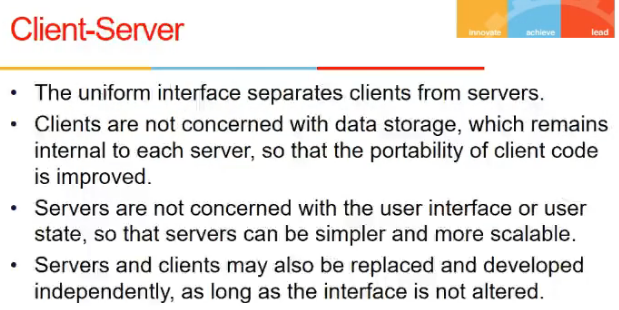
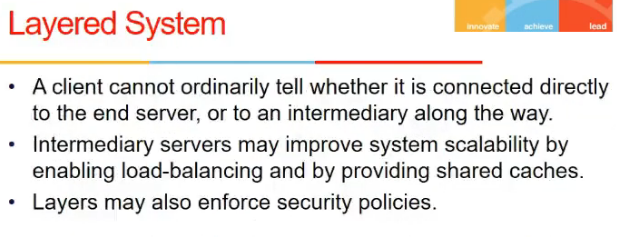
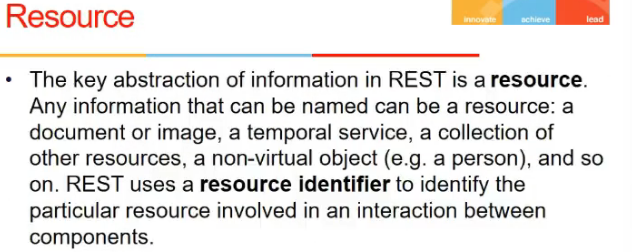
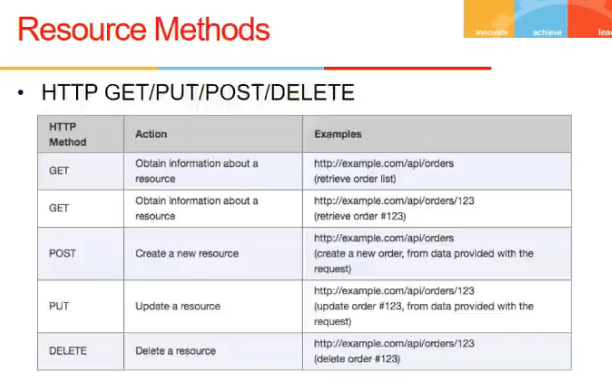
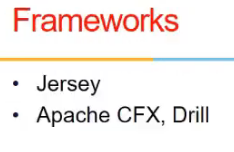
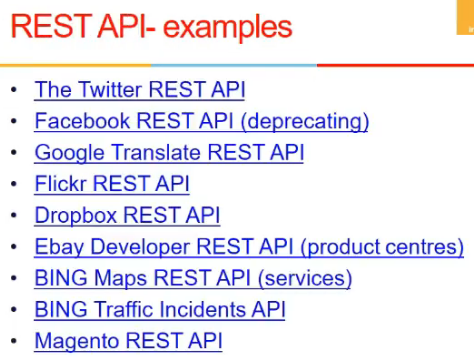
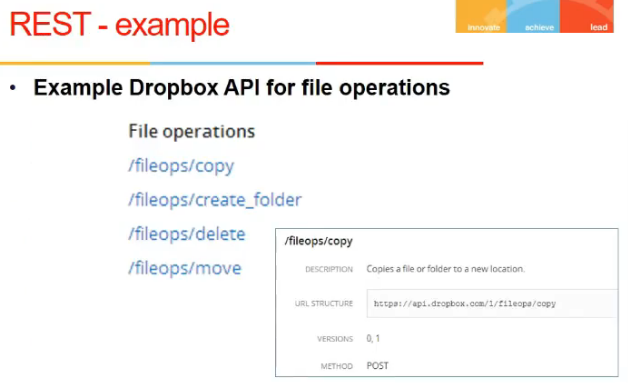
References






































